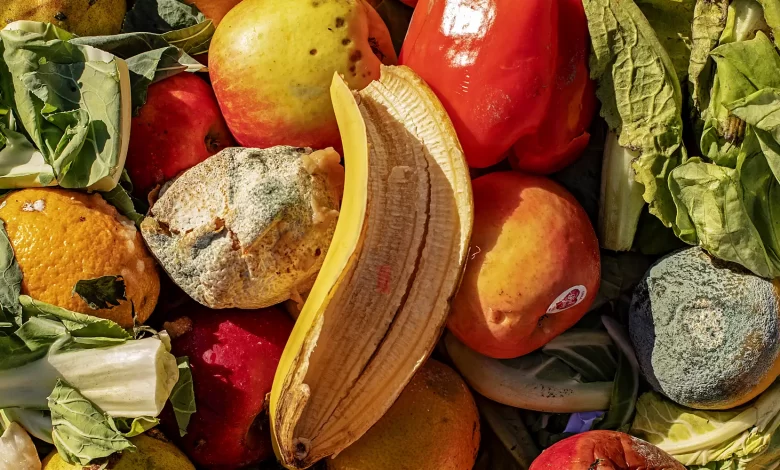
If you want to live a healthy lifestyle and reduce your overall carbon footprint, you must stop wasting food. Food waste is a significant issue worldwide, with 30% of all food being wasted. Not only is it sad to think about all of that food going to waste, but did you know that when uneaten food ends up in a landfill, it contributes to greenhouse gas emissions?
Food waste is another global epidemic that requires attention. According to the UN Food and Agriculture Organization, approximately 1.3 billion tons of food are wasted yearly. It is critical to save food waste and make informed food choices in order to improve this situation. Food costs money, and when food goes to waste, money goes to waste as well.
Reducing food waste is also good for your wallet. Fortunately, much of the food waste can be avoided by incorporating small changes into your daily routine. Here are some simple and practical tips for reducing food waste at home. Implementing these small changes can significantly affect the amount of food thrown away each year.
Here are some innovative and simple ways to reduce food waste at home and save money.
Ways You Should Adopt to Avoid Food Ways
1. Shop Smartly
Most people have a habit of purchasing more food than they require. Although it may be more convenient to buy in bulk, studies have shown that this purchasing results in a more significant amount of wasted food. It is better to make several journeys to the grocery store every few days rather than one trip to buy a large quantity of food once a week if you want to avoid purchasing more food than you require.
Before making another trip to the grocery store, make it a priority to consume all of the food that you bought on your most recent shopping excursion. You should also strive to remember everything on the list of things you need to buy by writing it down and sticking to it. You will be able to control your impulse purchases and waste less food as a result.
2. Store Your Food Wisely
A lot of food goes to waste because it wasn’t stored right. The Natural Resource Defense Council says that about two-thirds of the trash comes from food that has gone bad. Many people don’t know how to store fruits and vegetables, which can cause them to go wrong before they’re ready.
For example, you should never put potatoes, tomatoes, garlic, cucumbers, or onions in the fridge. Keep these things at room temperature. Another great way to keep food from going bad is to separate foods that make more ethylene gas from those that don’t. Ethylene makes foods ripen faster, which could cause them to go bad.
3. Know How to Preserve Your Food
People have employed food preservation methods like pickling and fermenting for thousands of years to keep their food fresh. 2400 BC may be the earliest known date for the use of pickling as a way of preserving food. In order to reduce wastage, you should utilize eco-responsible food and another thing you can do is to process your food such as pickling, drying, canning, fermentation, freezing, or curing food. By implementing these strategies, you’ll reduce your carbon impact while also lowering your costs. Furthermore, the majority of preservation methods are straightforward and often enjoyable.
4. Compost If You Can
Reusing food scraps by composting them is an environmentally friendly method of converting food waste into a renewable energy source for plants. Those without space for an outdoor composting system can still participate in this beneficial practice, thanks to the wide variety of countertop composting systems available. An outdoor composter may be the best option if you have a large garden, but a countertop composter is ideal for city folks with tiny houseplants or herb gardens.
5. Creative With Food
Preparing your own meals gives you the freedom to experiment with flavours and ingredients to create a unique dish that is uniquely yours. When experimenting in the kitchen, it’s a great idea to use bits of your cuisine that aren’t commonly used. In addition to sautéing and baking, stems and stalks can be used to flavour stocks and sauces.
6. Buy Misshaped Foods
Purchasing defective food, such as misshapen or atypically shaped produce, has never been easier. Some companies will send you “ugly” food monthly if you sign up for a subscription service. Community-supported agriculture (CSA) and farmers’ markets can also help you get your hands on faulty produce from a local farmer. But remember, don’t buy bruised or spoiled produce.
7. Understand the Expiry Dates of Food
Foods have many labels, such as “sell by” and “use by.” These dates help markets know when to change their stock, but they can confuse customers. The Food and Drug Administration (FDA) says that confusion about these dates is responsible for up to 20% of food waste. Many people think these dates are when the food will go bad and throw out food that is still good to eat. Remember that tags and labels on foods can give you a general idea of how fresh they are, but they are not rules.
Final Thoughts
There are a lot of things you can do to reduce food waste. Not only will the practical tips in this article help you waste less food, but they may also save you money and time. Giving more thought to the food your family throws away daily can help make a difference and save some of the earth’s most valuable resources.
Along with the tips mentioned above for food waste, the one thing you can also adopt is food sharing. Instead of throwing it away, start sharing your food with others. There is a food-sharing platform for this which will help you to share your surplus food with others. BY sharing food with others, you are not only saving the environment but also helping others in need.



